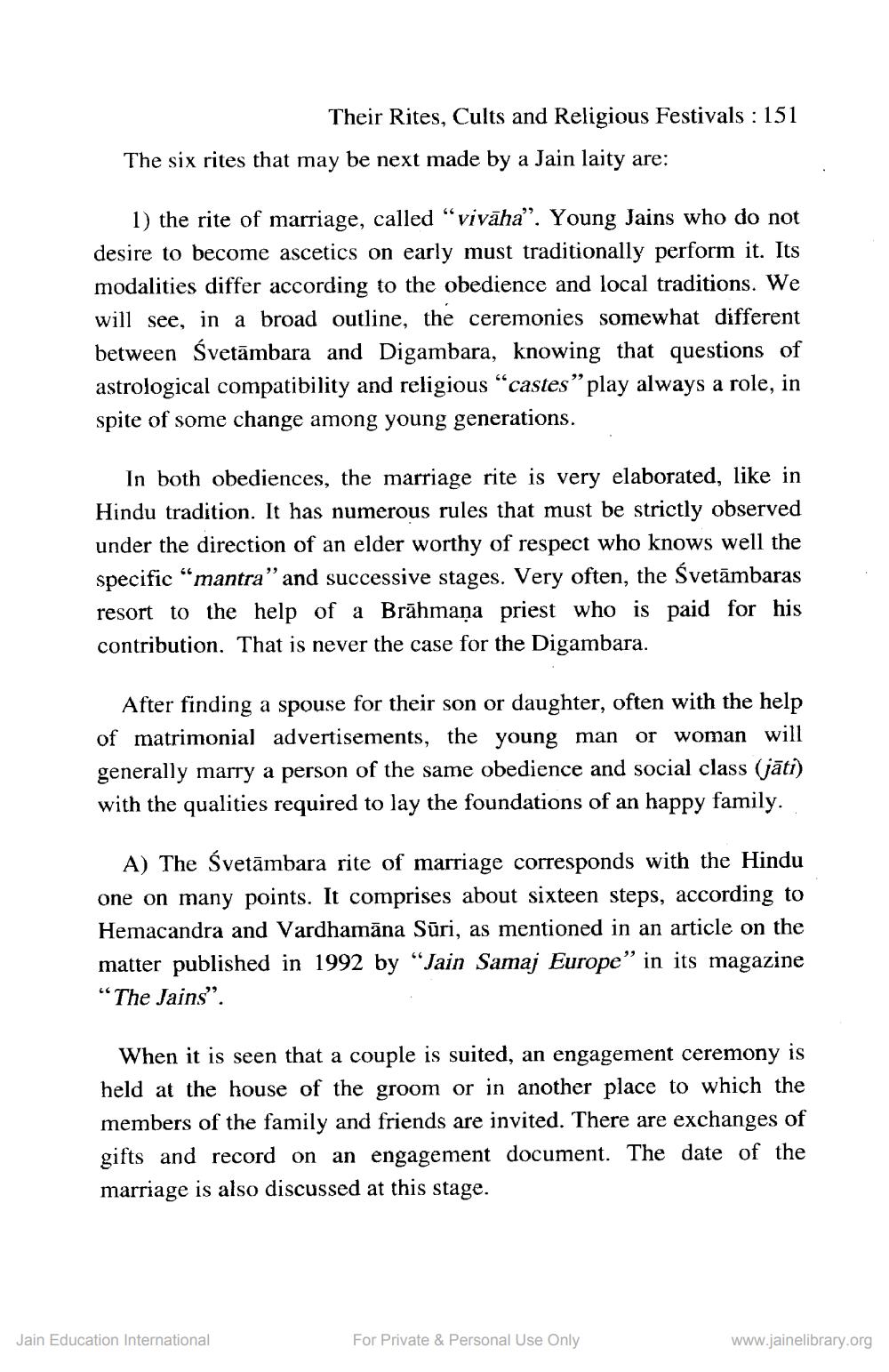________________
Their Rites, Cults and Religious Festivals : 151 The six rites that may be next made by a Jain laity are:
1) the rite of marriage, called “vivāha”. Young Jains who do not desire to become ascetics on early must traditionally perform it. Its modalities differ according to the obedience and local traditions. We will see, in a broad outline, the ceremonies somewhat different between Svetāmbara and Digambara, knowing that questions of astrological compatibility and religious "castes” play always a role, in spite of some change among young generations.
In both obediences, the marriage rite is very elaborated, like in Hindu tradition. It has numerous rules that must be strictly observed under the direction of an elder worthy of respect who knows well the specific “mantra” and successive stages. Very often, the Svetāmbaras resort to the help of a Brāhmaṇa priest who is paid for his contribution. That is never the case for the Digambara.
After finding a spouse for their son or daughter, often with the help of matrimonial advertisements, the young man or woman will generally marry a person of the same obedience and social class (jāti) with the qualities required to lay the foundations of an happy family.
A) The Svetāmbara rite of marriage corresponds with the Hindu one on many points. It comprises about sixteen steps, according to Hemacandra and Vardhamāna Sūri, as mentioned in an article on the matter published in 1992 by “Jain Samaj Europe" in its magazine “The Jains”.
When it is seen that a couple is suited, an engagement ceremony is held at the house of the groom or in another place to which the members of the family and friends are invited. There are exchanges of gifts and record on an engagement document. The date of the marriage is also discussed at this stage.
Jain Education International
For Private & Personal Use Only
www.jainelibrary.org




